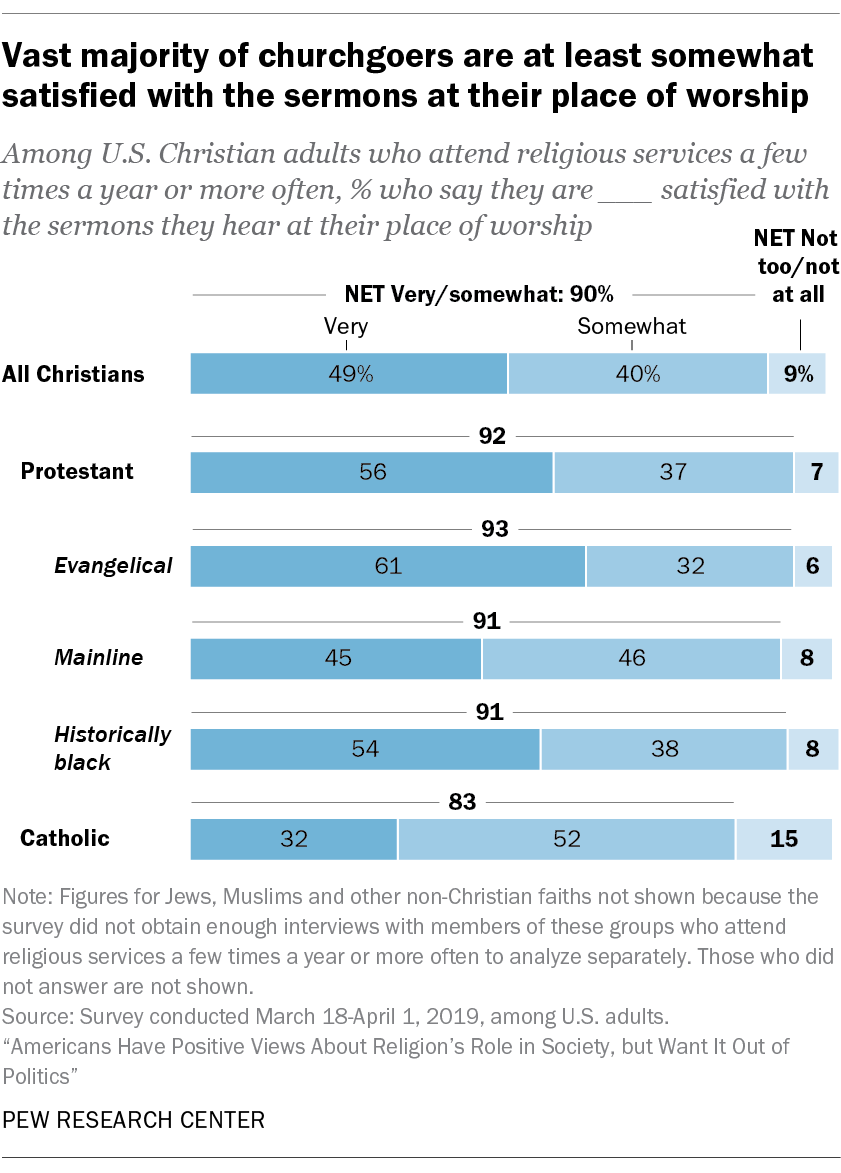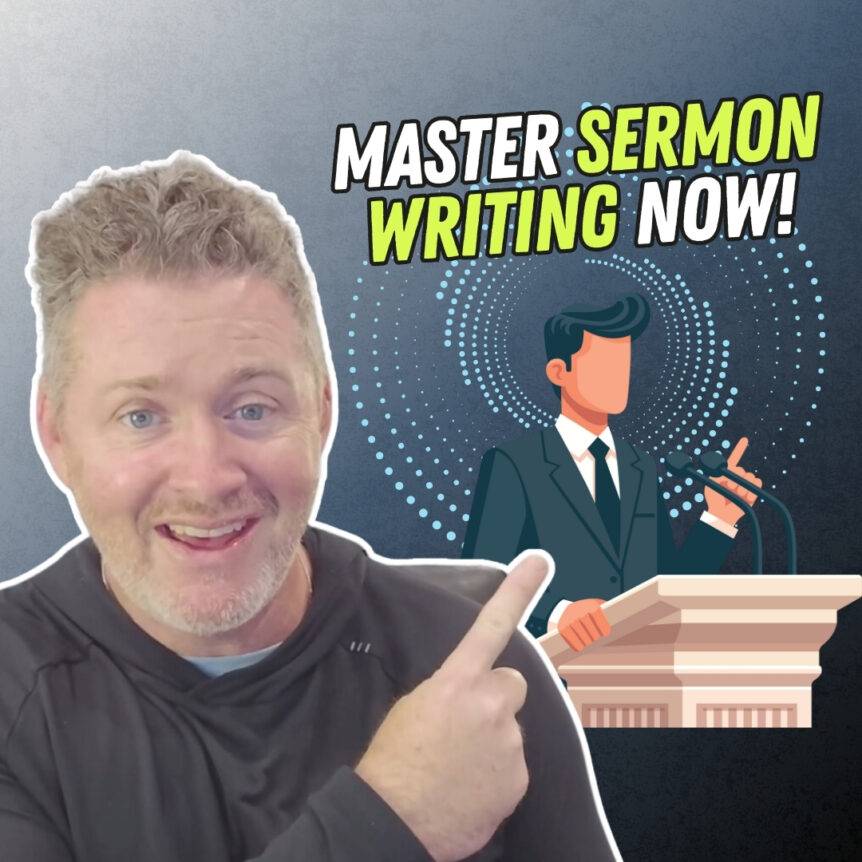Preparing a sermon can feel overwhelming, but it becomes a rewarding and effective process with the right writing techniques.
In this podcast, we’ll cover everything you need to know about sermon prep. Then, we’ll go over our list of the top 7 advanced writing techniques to help pastors with their prep. Whether you’re new to preaching or have been doing it for years, these methods can make sermon writing easier and more impactful.
By following these simple steps, you’ll be able to deliver sermons that not only inspire but also guide your congregation in their spiritual growth. Let’s break down the process of sermon prep into easy-to-follow steps that anyone can use to create meaningful and engaging messages.
Ready to dive in? Let’s go.
Estimated reading time: 11 minutes
Table of contents
Sermon Preparation Process

Let’s start by going over the sermon preparation process. It’s always important to prepare your sermons beforehand, so you know what to say and what to focus on. In this section, we’ll provide an overview of sermon prep, look at the challenges we are facing, and then look at how implementing effective writing techniques can overcome them.
Sermon Prep: An Overview
The sermon preparation process begins with finding clear sermon ideas. This could be inspired by a specific Bible passage, a theme, or a message that God has placed on your heart. Some pastors choose to work through an entire sermon series, focusing on one topic over several weeks, while others may prefer to preach topical sermons, which address current issues or specific themes.
Once you have a direction, it’s important to spend time studying God’s word and seeking a deeper understanding of the chosen passage. From there, the sermon writing process begins, where you’ll create a sermon outline. This outline helps organize the message into clear sections, typically including an introduction, key points, and a conclusion.
Following a structured approach ensures that your message flows well and is easy for the congregation to follow.
Challenges in Sermon Prep
Sermon prep can present various challenges, even for experienced pastors. One of the most common struggles is finding new sermon ideas that feel fresh and relevant. Reaching a balance between biblical accuracy and practical application can also be difficult. Understanding complex or less familiar parts of the Bible and finding ways to communicate them clearly to a diverse congregation takes effort and wisdom.
According to Pew Research Center, only 49% of Christians are very satisfied with their pastor’s messages.

Now this is already a pretty encouraging statistic! However, we want to get that number way above 50% if we can. Perfecting our sermon writing techniques is one way we can do that.
But there are still many challenges. In addition to finding new topics, another common challenge is time management. Preparing a sermon is a time-consuming process that involves prayer, research, and writing. Balancing the need for in-depth study with the demands of daily pastoral duties can make it hard to devote the necessary time to the sermon writing process.
Lastly, keeping a message engaging without losing depth can be tough, as it requires a good grasp of both the Bible and the needs of the congregation.
Implementing Writing Techniques
Having good writing techniques is crucial for creating effective sermons. A clear and organized sermon outline helps keep your message focused and prevents you from wandering off topic. It also ensures that the congregation can easily follow your thoughts.
Knowing how to communicate well also allows you to bring out the key truths from God’s word in a way that connects with your audience. When you understand the structure of writing, you can craft memorable introductions and conclusions, and shape your points in a logical and persuasive way.
This becomes even more important when creating an entire sermon series, as the messages need to build upon one another without becoming repetitive. Good writing techniques also help in presenting topical sermons, where you need to combine biblical teaching with practical life applications.
In the end, a well-prepared sermon can inspire, teach, and guide the congregation closer to God.
Top 7 Sermon Writing Techniques

And that’s everything general you need to know about sermon prep. In this section, we’ll cover our list of the 7 best sermon writing techniques to take your sermons to the next level. We encourage you to implement as many of these as you can to elevate your sermons.
1. Define a Theme
Defining a theme is a powerful sermon writing technique because it helps keep your message focused and clear. A theme is the big idea or main idea that ties everything in your sermon together. By focusing on one theme, you can avoid overloading your audience with too much information. Instead, you guide them through one central truth or lesson that they can easily remember and apply.
For example, if your theme is “forgiveness,” all your points, scriptures, and stories should connect to that main idea. This allows the congregation to walk away with a clear understanding of what the sermon was about. Having a well-defined theme also helps you as the preacher. It keeps your thoughts organized and makes the sermon writing process smoother, as you’ll have a clear direction to follow from start to finish.
Defining a theme ensures your message is effective and impactful. It may seem simple, but this is one of the most important techniques to know when writing your sermon.
2. Start Strong
Starting strong with a good hook is an essential sermon writing technique. How a sermon begins sets the tone for the rest of your message. A hook grabs the attention of your audience right away and makes them want to listen. This can be done through a powerful story, a thought-provoking question, or an interesting fact.
The goal is to capture curiosity and make a connection. In today’s world, where many people may watch the sermon online, starting strong is even more important. If you don’t engage your listeners quickly, they might lose focus or click away. A good hook helps you draw them in and encourages them to stay engaged throughout the sermon.
When the sermon begins with something compelling, it also helps the congregation prepare their hearts and minds for the message that follows, making it easier for them to connect with the truths you’ll share.
Keep in mind that we are not suggesting that you use gimmicks or cheap tricks to keep people’s attention. We believe the beginning of your message should have weight and purpose and also grab people’s attention.
3. Focus on the Word
Focusing on the Word of God is one of the most important sermon writing techniques. The Bible is the foundation of every sermon, so making sure your message is rooted in Scripture is key. By centering your sermon on a specific Bible passage, you ensure that your teaching is biblically sound and meaningful.
Studying the text deeply helps you better understand God’s message and communicate it clearly to your congregation. Tools like Bible dictionaries and commentaries can help you explain words and concepts more accurately, giving your audience a fuller understanding of the passage.
Here’s how to focus on God’s word in your sermon:
- Choose a central Bible passage to base your message on.
- Study the original meaning using Bible dictionaries and commentaries.
- Always connect your points back to the Scripture, making sure it’s the foundation of everything you say.
By focusing on Scripture, your sermon will be more impactful and spiritually enriching.
4. Use Clear Language

Using clear and simple language is a vital sermon writing technique because it helps everyone in the congregation understand the message. Not everyone has the same level of biblical knowledge, so it’s important to communicate in a way that’s easy to follow.
Avoid using complicated theological terms or jargon that might confuse your audience. Instead, speak in a way that anyone, whether they’re new to church or have been attending for years, can grasp. When you use simple language, the same way Jesus often used parables to teach, it helps your congregation connect with the message and apply it to their lives.
Clarity is also key for people who might be hearing the sermon online. When your words are easy to understand, it’s more likely that people will stay engaged and get the most out of your teaching. In the end, clear and simple language makes your sermon accessible and meaningful to all listeners.
5. Ask Good Questions
Asking thought-provoking questions is a powerful sermon writing technique because it engages your audience and encourages them to think deeply about the message. Well-placed questions invite the congregation to reflect on their own lives and faith, making the sermon more personal. This technique helps create a connection between the listener and the scripture, encouraging self-examination and a deeper understanding of God’s word.
When you include questions throughout the sermon, it also helps break up the message and keeps people attentive. Thought-provoking questions challenge the audience to consider how they might apply the teaching to their daily lives. They can also be used as part of your outlining method to guide the flow of your sermon.
For example, you can open with a question that relates to your main theme and revisit it as you go deeper into the message. By doing this, you invite listeners into a conversation with God and His word.
6. Balance Scripture and Application
Balancing Scripture and application is a key sermon writing technique that ensures your message is both biblically sound and practical. While Scripture gives the foundation and truth, application shows how those truths affect everyday life.
A sermon that focuses only on Scripture can feel distant, while a sermon focused only on application might lack spiritual depth. By blending both, you help the congregation understand God’s word and how to live it out.
Here’s how to create balance in your sermon:
- Start with a clear Bible passage and explain its meaning.
- Relate that meaning to modern-day situations or struggles.
- Give practical steps or examples of how to apply it.
This balance keeps the sermon grounded in God’s word while also addressing real-life issues. It helps the audience see the relevance of Scripture in their daily lives, making the message both meaningful and actionable.
7. Finish Strong
Including a strong conclusion is an essential sermon writing technique that leaves a lasting impact on your audience. The conclusion is your final opportunity to reinforce the key message and encourage your congregation to reflect on what they’ve learned.
A powerful conclusion summarizes the main points of the sermon and ties them back to the central theme or Bible passage. It can also inspire listeners to take action, whether that means changing their behavior, deepening their faith, or sharing the message with others.
A good conclusion can evoke emotion and create a sense of urgency. You might include a call to prayer or an invitation to respond in some way. This final moment should resonate with the audience, helping them remember the sermon long after they leave. By ending strong, you ensure that the message remains in their hearts and minds, guiding them in their spiritual journey.
Writing Sermons

In conclusion, effective sermon writing involves a blend of techniques that help convey God’s message clearly and powerfully. By focusing on the Word of God, using simple language, and asking thought-provoking questions, you engage your audience and invite them to reflect on their faith.
Balancing Scripture with practical application ensures that your sermons are not only theologically sound but also relevant to everyday life. A strong conclusion reinforces the main message, leaving listeners with something to ponder and act upon. Each of these techniques plays a crucial role in the sermon writing process, making it possible to connect with your congregation in a meaningful way.
As you continue to develop your preaching skills, remember that the goal is to share God’s love and truth, inspiring others to grow in their faith. With dedication and prayer, your sermons can become a powerful tool for spiritual growth and transformation in the lives of your listeners.
Can you think of any other effective sermon writing techniques? Let us know in the comments below!
More Resources on Sermon Prep





